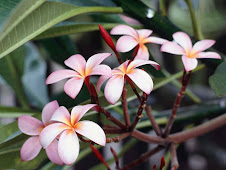
I am going to buy a clown fish, so I decided to do some research on how to sucessfully keep a clown fish as a pet.
The reason why the clown fish is called "clown fish" is because they are extremely aggressive and though to be "clowning around." Orange to bright yellow is the popular color for clown fish but they can also range from yellow to blue. Clown fish can only grow 2 to 5 inches long. Since they are so aggressive they can't live harmoniously with other fish. Their life span in the wild however, is 6-10 inches. This is probably because of better living conditions the clownfish has in the wild. Clown fish live in saltwater so, it's harder to maintain. (http://tolweb.org/treehouses/?treehouse_id=3390).
Diet:
Clown fish eat kelp and algea. As pets it's okay to feed them flakes, tablet, frozen, or live animal and plants. Its important to avoid excessive feeding for any fish! It can be very harmful to the fish. I also heard that it's okay to starve the fish because that clears the fish's digestive system.
Feeding:
your suppose to feed the fish 3 to to times daily; no more than what the fish can eat in three to five minutes. It's very important to read the instructions on the fish food container.
Hosuing:
Housing is really compicated. You must have atleast 2 gallons to keep one fish. With a minimum size of 30 gallons with a filtration system to maintain a stable enviroment. Salt water fish need more space and better water quality than fresh water fish. You need to provide: plants, rock, and décor for hiding places and plenty of room for movement. Clown Fish also need a specific water temperature in order to live: 75F-82 F. Also PH levels: 1.020 to 1.026.
Stable water quality, water temperature, and pH levels are critical to the health of fish.
Stable water quality, water temperature, and pH levels are critical to the health of fish.
Misalaneous:
Clownfish are born as males, but when there are two clown fish the lager clownfish will change their gender into female.
Habit maintain:
In order to maintain a good habitate for your fish you must:
-check your filter and other equitment daily.
-check water quality and air temperature at least once a week.
-check sanity levels at least one a week.
-change 10-25% of total volume of water every two-four weeks
-Introduce new fish to the aquarium gradually
Compatiablity:
If possible keep with a commpanion anemone because clownfish are most healthiest with this companion. They naturally function with this companion in the wild, so to make the tank more closer to home, it's better for the animal.
Signs of a healthy fish:
I always wondered how you know when your fish is healthy or when it's sick. Here are some healthy signs:
• Clear eyes • Eats vigorously
• Active swimming • Clean in appearance
• Clear eyes • Eats vigorously
• Active swimming • Clean in appearance
Common health issues:
This is really important if you want to keep this expensive fish alive!!
Fin Rot= Frayed or disintergrating fins; the base of the fins usually reddens :(
Suggested Action= improve water quality, comercial antibiotics may be effective.
Marine ich= Cysts on fins, gills, and skin; fasting; cloudy eyes; labored breathing; excess skin mucus; or pale skin.
Suggested action: Treat entire aquarium with a copper-based parasite remedy and improve water quality; freshwater dips can dislodge the parasites.
Signs of illness:
• Loss of appetite • Spots or fungus on body or mouth
• Listlessness • Labored breathing
• Loss of appetite • Spots or fungus on body or mouth
• Listlessness • Labored breathing
If you notice any of these signs, test water quality and improve as necessary, or contact your veterinarian.
Preventing Common Health Issues:
Avoid crowded conditions; they are a major cause of stress and disease
Maintain good water quality with regular water changes and adequate filtration
Sources:
Clownfishes by Joyce D. Wilkerson
The New Marine Aquarium by Michael S. Paletta
The Tropical Marine Fish Survival Manual by Gordon Kay
The New Marine Aquarium by Michael S. Paletta
The Tropical Marine Fish Survival Manual by Gordon Kay

No comments:
Post a Comment